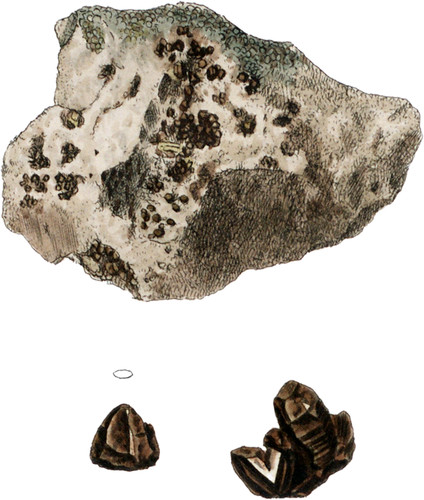 Enlarge
Enlarge
Exotic Mineralogy
Humite
- Syn. Humite. Bournon Catalogue, 52.
The penetration of the Count de Bournon, which is equalled only by the persevering generosity and scientific ardour with which he has strove for many years to promote the useful study of minerals, and for which, although his endeavours have not been crowned with the success they have merited, Britain is much indebted to him; an habitual penetration which, improved by experience, has added many important discoveries to the science, could not fail to distinguish the present mineral from Idocrase, for which, it is very probable, most mineralogists have taken it, and despising crystals too small to attract their notice, rejected the specimens in which it formed a predominant feature.
Humite is found among the light brownish grey granular Topaz of Mount Somma, which is accompanied by a beautiful variety of green Mica, that appears of an orange red colour when viewed through the faces of the prism or edges of the plates. It is distinguished from Idocrase, by the great lustre of its surface, by the form of its crystals, which are short hexaëdral prisms with many-sided pyramids, that have often eight-sided terminal planes; by its inferior hardness, which is very little greater than that of Quartz; and lastly by its colour, which is a brighter and rather purplish brown, without the green cast which characterizes Idocrase.
The name of this mineral, dictated by the Count de Bournon’s friendship, will hand down to posterity that of Sir Abraham Hume, Bart., as a patron of mineralogy, to whom such an honour is most justly due.

